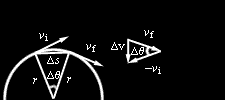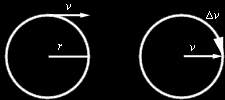

Kinematics
Kinematics is the branch of mechanics that seeks to describe the motion of bodies using the concepts of space and time without regard to the causes of the motion.
One dimensional kinematics:


Assuming constant acceleration:
Integrate (2):


Integrate (3):

Substitute (3) into (4):

Two dimensional kinematics:
The equations are analogous to those of one dimensional kinematics.


The separation vector, r, can be broken down into components in the x and y directions:

Projectile motion:
These equations apply to an object launched from the origin (0,0) with initial velocity v0 at an angle q to the horizontal. There is no horizontal acceleration, and the vertical acceleration is -g.


Integrate (10) with respect to time:

Integrate (11) with respect to time:

Solve (12) for t and substitute this into (13):


The time it takes for the projectile to reach its maximum height is t1, when vy=0:

Substitute this expression into (13) for the maximum height:

Substitute 2t1 into (12) for the range of the projectile:

In a similar manner, it is possible to derive equations for a projectile fired from a height of h0:



Uniform Circular Motion:
The following demonstrates two ways in which the familiar equation for centripetal acceleration may be derived:
1:

We first use (2):

Now, looking at the diagram, it is possible to see the following relation:

Substituting (2) into (22):

2:

Again using (2):
